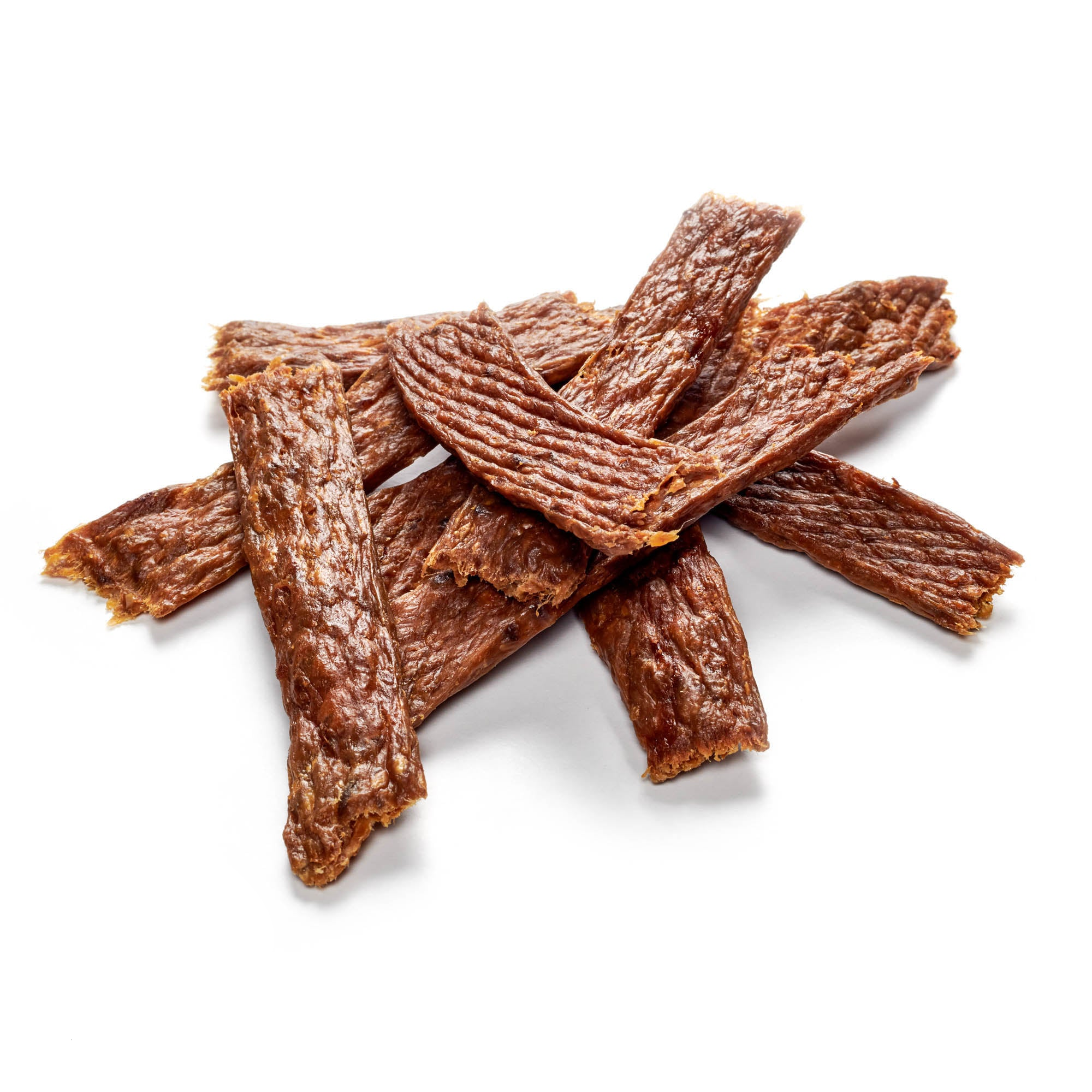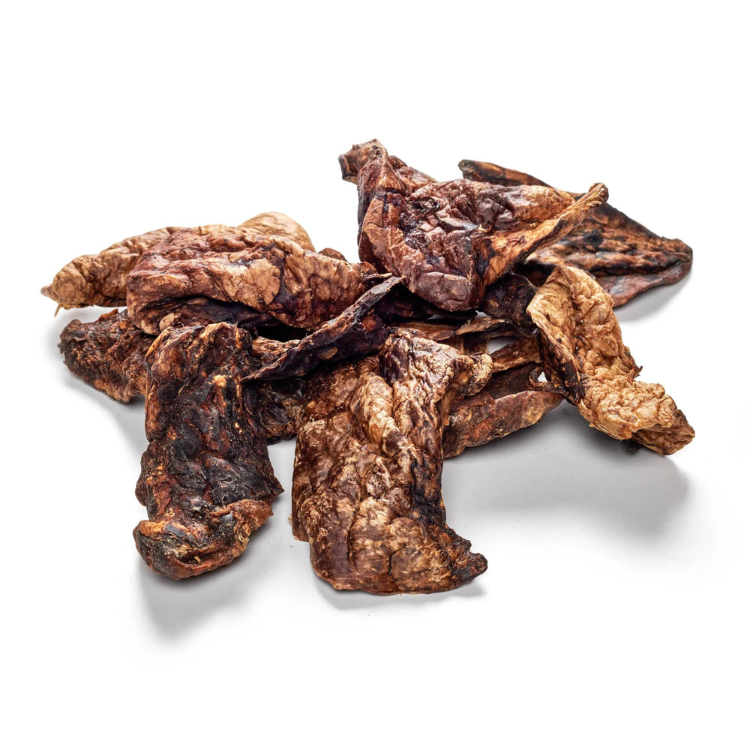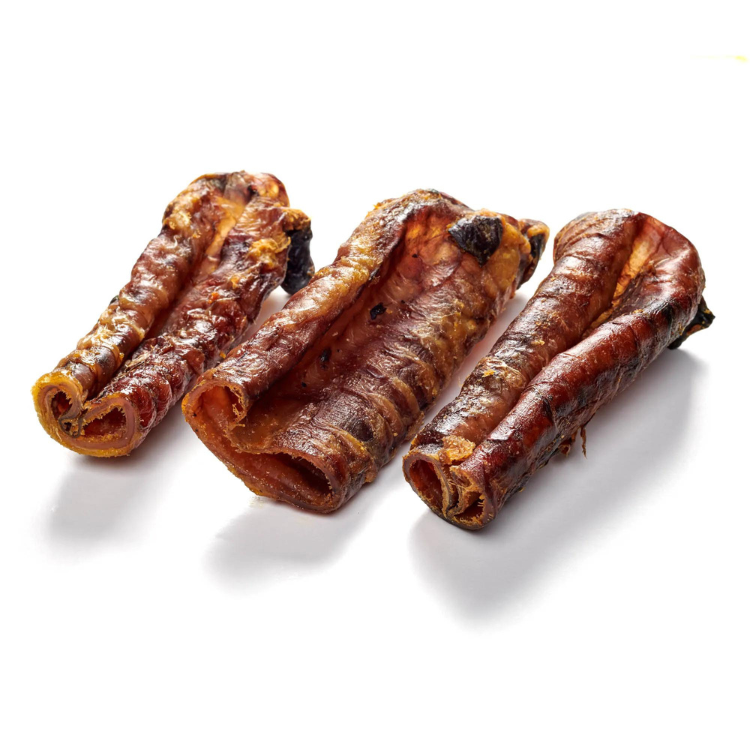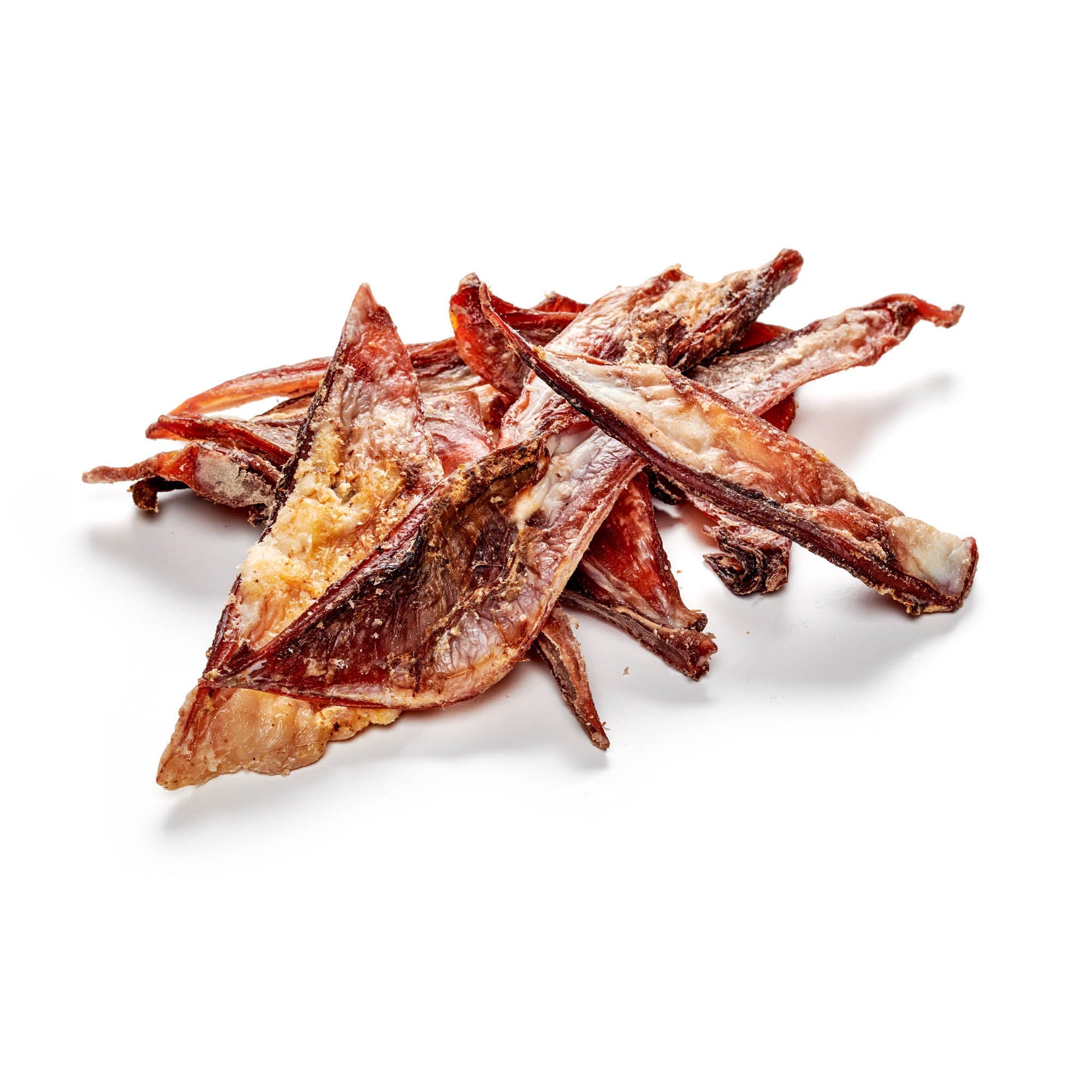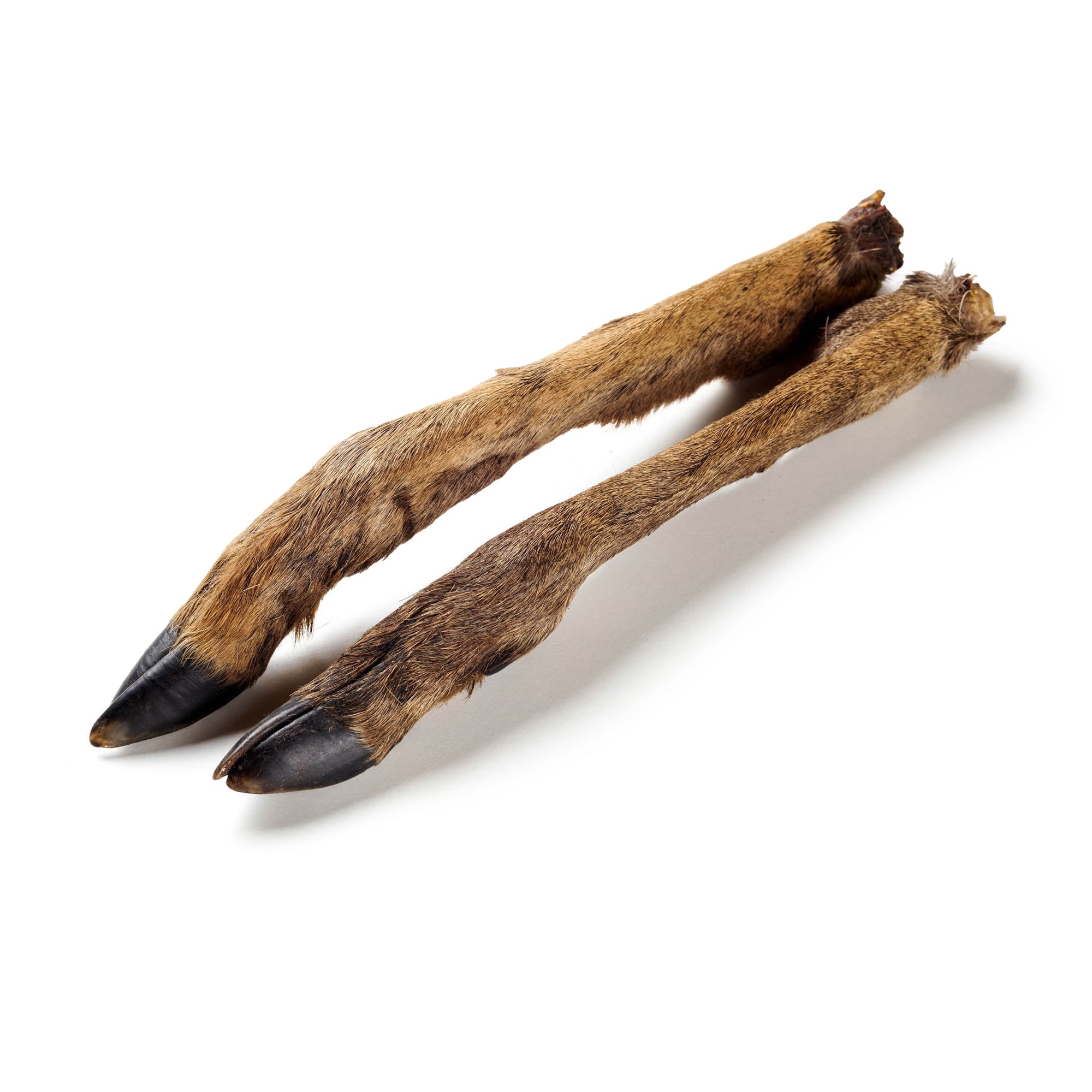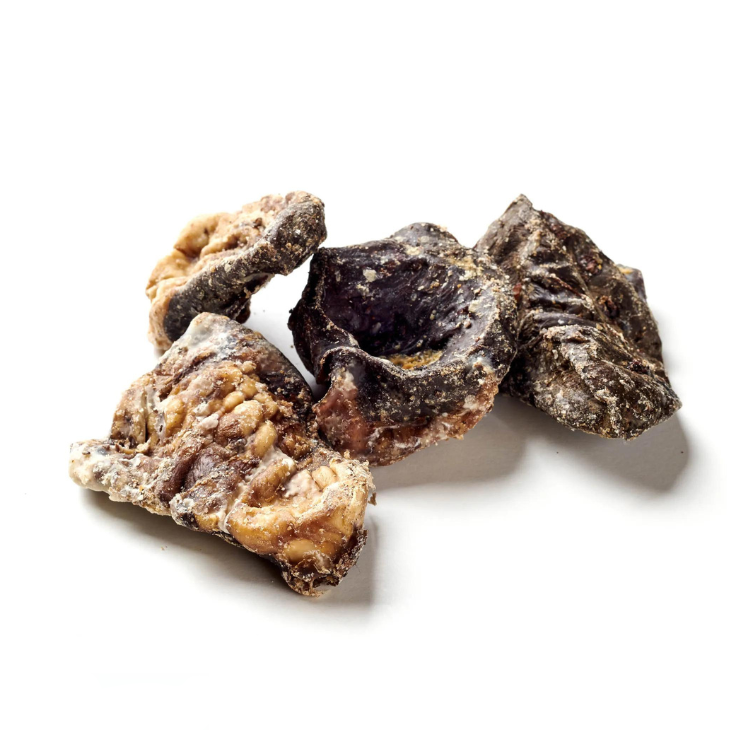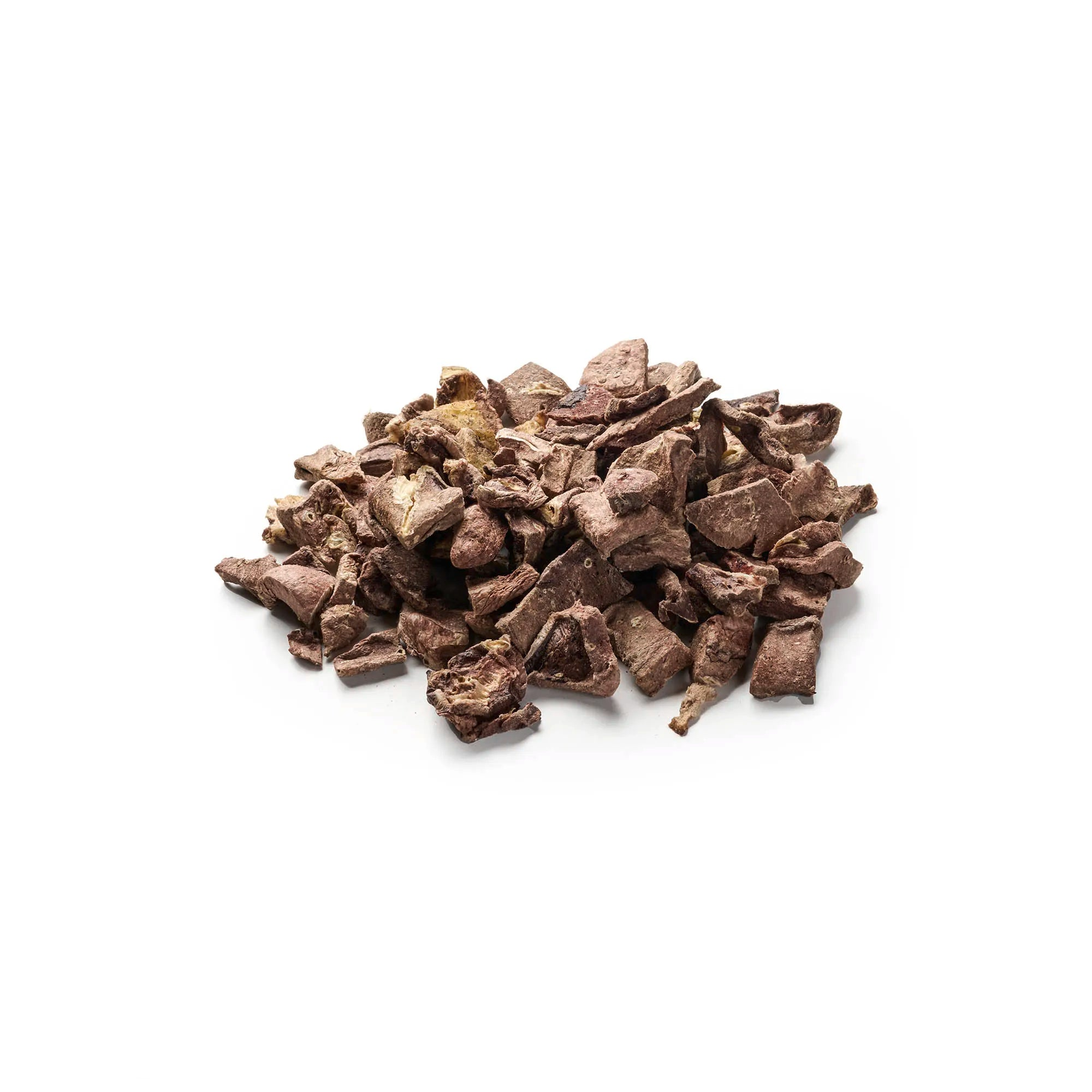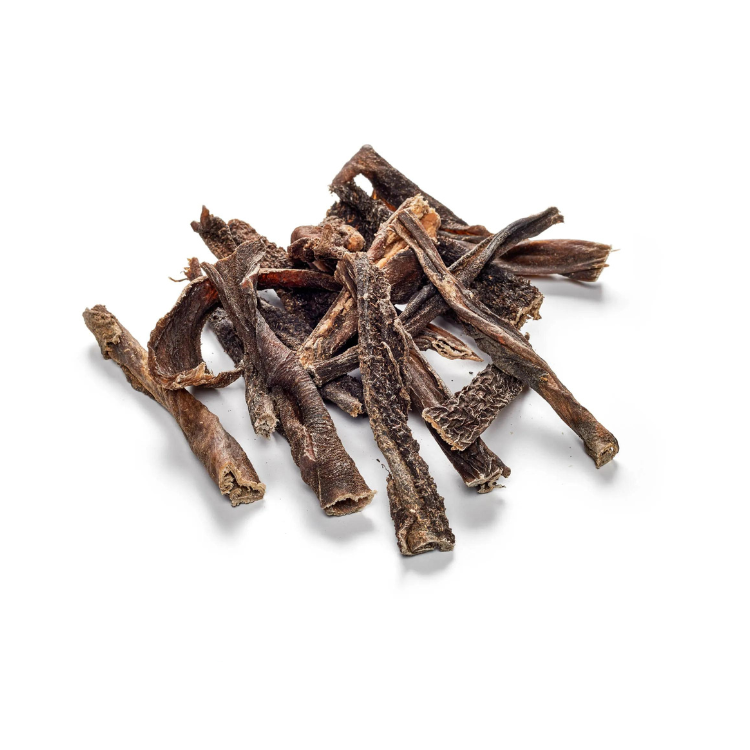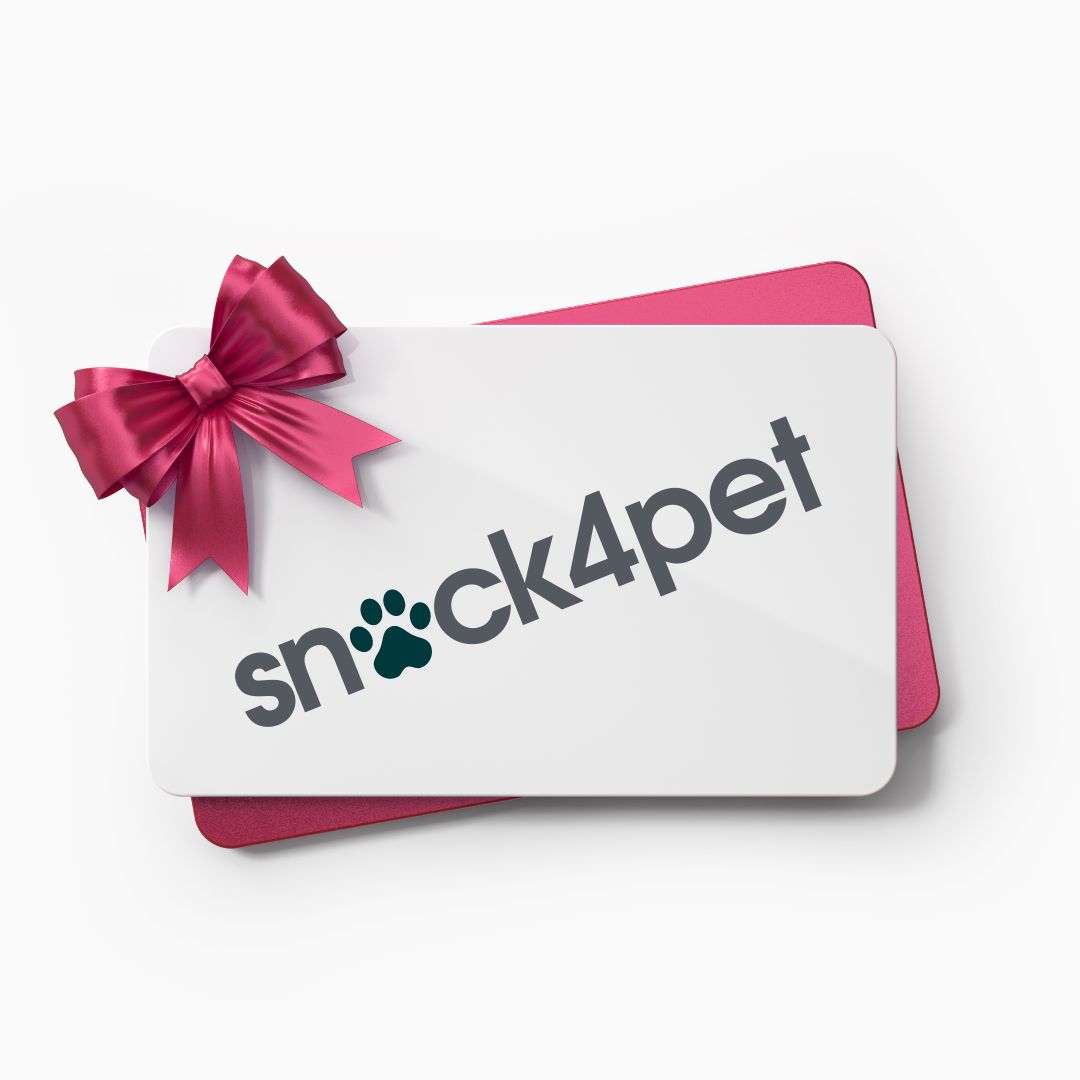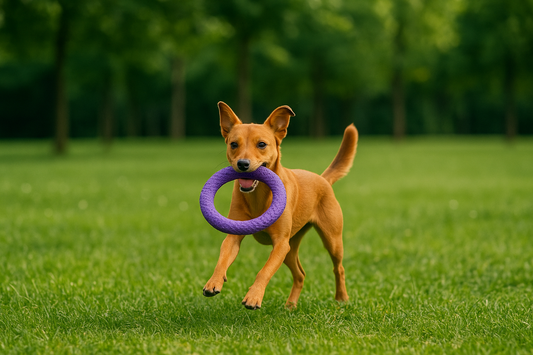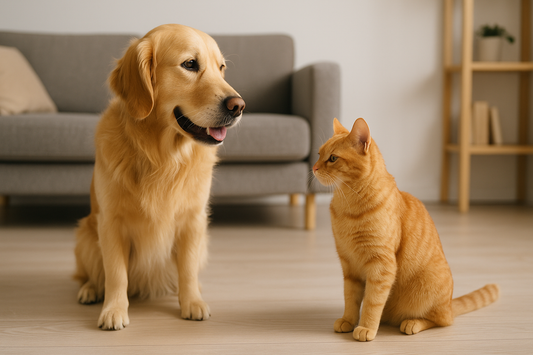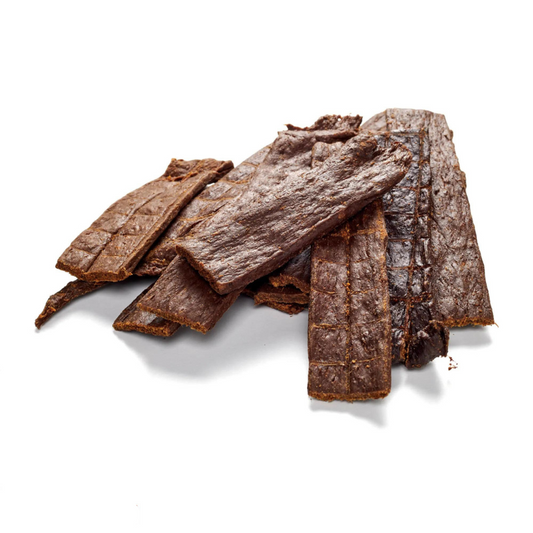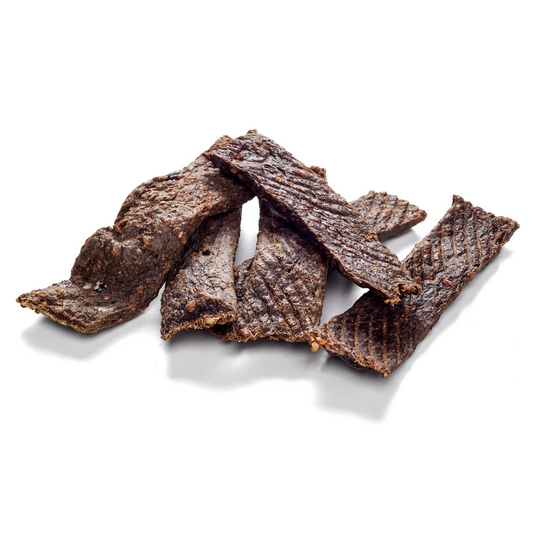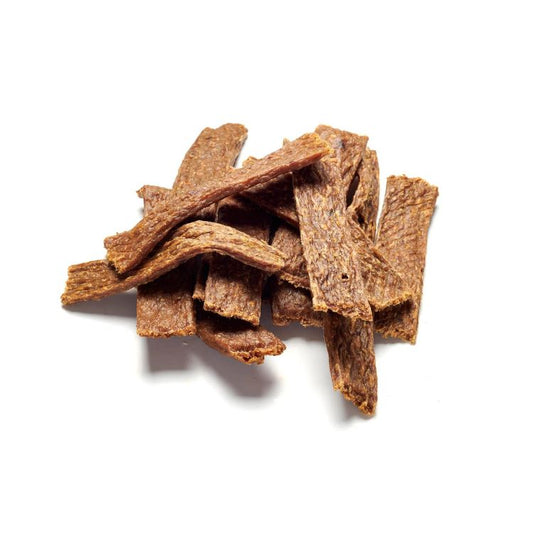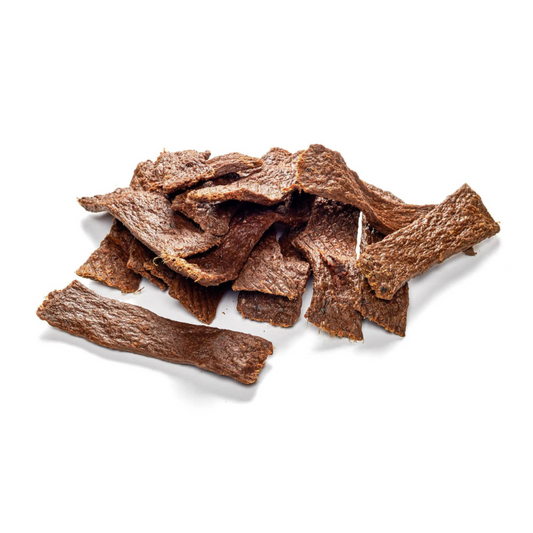
Greenland Dog
Share
In addition to the well-known Siberian Huskies and the Alaskan Malamute, there is another sled dog from the cold north: the Greenland dog. As the name suggests, it comes from Greenland and is a popular working animal there. With its thick fur and powerful stature, it looks very similar to its wolf ancestors.
Content: Greenland Dog
- profile
- Special features
- Nutrition
- Health and care
- Origin & History
- The right accessories
- Conclusion
Pamper your dog with our chew products!
Greenland Dog - Conclusion
- Character: Energetic, fruitless, loyal
- Size: Large
- Height: 51-68cm
- Weight: 30-32 kg
- Life expectancy: approx. 10 years
- Coat type: medium hair
- Color: White, Black, Brown
- FCI Group: Spitz – primitive dogs
Greenland Dog - Special Characteristics
The Greenland Dog is very rarely seen outside the cold regions around Greenland. It is a working dog and not really suitable as a family or companion dog. Training it requires experience, calmness and stamina. The latter is particularly important because anyone who wants to keep such a dog must give it enough exercise. Through many hundreds of years of evolution in icy temperatures, its fur has developed into a weatherproof protection, which is why it can be kept outside in wind and weather without any problems. The fur is usually white, but it can also be brown, black or slightly reddish. With a withers height of up to 60 cm, it is relatively large. The Inuit still use it today as a sled dog, but also for hunting or as protection against polar bears because it is strong, fast and fearless. Anyone who wants to keep a Greenland Dog should consider whether they have the space and strength for one or two more dogs because without its fellow dogs or a similar pack it will feel lonely and communicate this with loud howls. Under no circumstances should they be kept alone, as they will hardly integrate into the family like other dog breeds do.
Greenland Dog - What should be considered regarding nutrition?
Since Greenland dogs move around a lot and burn calories when kept in a species-appropriate manner, they need a lot of dog food . High-quality dog food is always recommended, ideally with a high meat content. However, the advertising messages of manufacturers do not always correspond to the truth and grains can also be included in the food. A ratio of 70% meat to 30% grain is a good choice. Healthy dogs should not have a problem with this - but if it turns out that they are intolerant to grains, they should of course avoid it.
Delicious dog snacks for pure enjoyment are available from us!
Greenland Dog - Health and Care
Anyone who brushes a Greenland Dog usually does so for their own eyes. The dog doesn't care and doesn't need it. In warmer regions of the world, they lose their undercoat - this can be helped with a Furminator. They are robust animals that have been bred specifically to prevent them from getting sick. And so the Greenland Dog is a breed of dog that has few or no breed diseases. Only the joint problems that occur in large dogs can cause problems for the Greenland Dog if the diet is incorrect or they don't get enough exercise.
Greenland Dog - Origin & History
The Greenland dog has lived with the Inuit for over 1000 years and goes hunting with them or pulls sledges as a loyal companion. It is assumed that they came to Greenland and North America from Siberia with the Inuit's ancestors. This makes it one of the oldest dog breeds of all. For the Inuit, it was and is one of the most important survival factors in the harsh wilderness of Greenland. In an emergency, the dogs were also eaten and their warm fur used.
They became known worldwide thanks to the polar explorer Roald Amundsen, who is said to have bought an impressive 100 Greenland dogs around 1910 because he was convinced that they would cope better in snow and ice than horses or ponies. The Greenland dog is genetically similar to the Eskimo dog or Inuit dog, which, unlike the Greenland dog, is not recognized by the FCI as an independent dog breed. It is the fourth sled dog, alongside the Alaskan Malamute, Samoyed and Siberian Husky.
Greenland Dog - The right accessories
The right accessory for this original dog breed is actually a house with a large garden, because it should always be able to move around freely - ideally together with other dogs. They can also stay outside overnight without any problem, after all, even in Greenland they are mostly kept outside. However, if you want to sleep peacefully while your dog is outside, you should think about a dog fence.
Other accessories you need include a good leash, collar or harness , food and water bowls and a place to sleep. You shouldn't skimp on this, as the joints benefit from a good dog mattress. If you want to do sports with your Greenland dog but don't live in a winter wonderland, you can buy a dog scooter for sled dogs. This can simulate sledding and the dog or the pack is sufficiently exhausted at the end of the day.
Conclusion
Anyone who wants a Greenland Dog should be aware that these dogs take up a large part of their lives. Only those who really spend a lot of time with dogs (plural!) and are perhaps interested in dog sledding should get a Greenland Dog. This breed of dog is not for everyday life - it is and remains a working dog with a very primitive nature. In addition, a certain amount of experience in handling and training dogs should be present! Dog novices will only have short-term fun with a Greenland Dog - especially since it really should not be kept alone. Anyone who is interested in their first dog will definitely find the right dog in our overview of dog breeds.
Reward your best friend with our dog treats!

